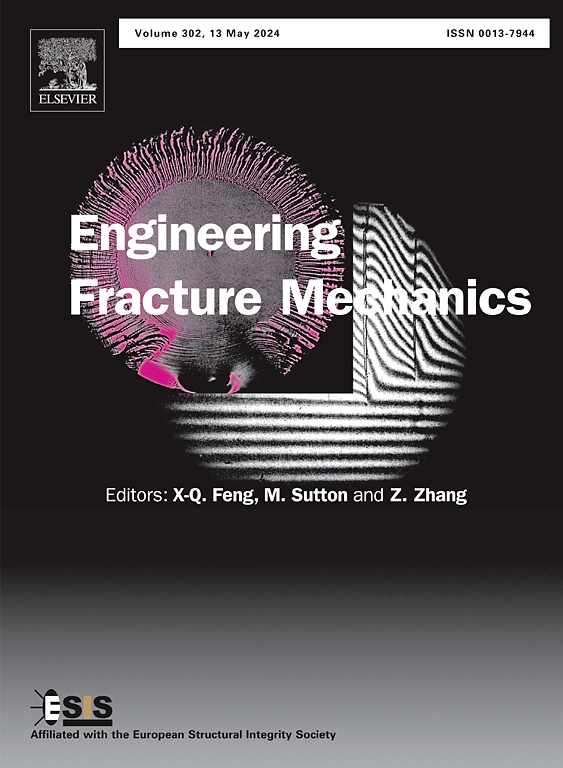热冲击循环后花岗岩I/II混合模式断裂和裂纹扩展特征:DIC和CPG综合研究
IF 4.7
2区 工程技术
Q1 MECHANICS
引用次数: 0
摘要
热冲击循环后储层岩石的裂缝行为对增强型地热系统的稳定性和采热效率至关重要。在这项研究中,缺口半圆弯曲(NSCB)花岗岩试件具有不同的预制裂纹角度进行了多次热冲击循环。随后,采用数字图像相关(DIC)技术和裂纹扩展仪(CPG)测量进行三点弯曲试验。深入研究了I/II混合模式断裂韧性、断裂过程区长度和裂纹扩展速度随热冲击循环次数的变化规律。实验结果表明,随着热冲击循环次数的增加和预制裂纹角的增大,断裂韧性和最大弹性弹性区长度均减小。最大FPZ长度与混合模式断裂韧性之间存在较强的线性正相关关系。平均裂纹扩展速度随热冲击循环次数的增加呈明显的指数衰减。详细的断口表面观察表明,随着热冲击循环次数的增加,实际裂纹扩展路径与理论裂纹扩展轨迹之间的偏差显著增加。预制裂纹角越大,平均裂纹扩展速度越小。热冲击循环作用下花岗岩的劣化是反复热致损伤、水淬和水致弱化机制共同作用的结果。本文章由计算机程序翻译,如有差异,请以英文原文为准。
Mixed-mode I/II fracture and crack propagation characteristics of granite after thermal shock cycles: An integrated DIC and CPG investigation
The fracture behaviors of reservoir rocks following thermal shock cycles are critical to the stability and heat extraction efficiency of enhanced geothermal system. In this study, notched semi-circular bend (NSCB) granite specimens with varying prefabricated crack angles were subjected to multiple thermal shock cycles. Subsequently, three-point bending tests were conducted, employing digital image correlation (DIC) technique and crack propagation gauge (CPG) measurement. The variations in mixed-mode I/II fracture toughness, fracture process zone (FPZ) length and crack propagation velocity with respect to the number of thermal shock cycles were deeply studied. The experimental results reveal that both the fracture toughness and maximum FPZ length decrease with an increasing number of thermal shock cycles and larger prefabricated crack angle. A strong positive linear correlation is observed between the maximum FPZ length and mixed-mode fracture toughness. Additionally, the average crack propagation velocity exhibits a marked exponential decay with an increasing number of thermal shock cycles. Detailed fracture surface observations indicate that the deviation between the actual crack propagation path and the theoretical trajectory increases significantly as thermal shock cycles accumulate. Furthermore, a larger prefabricated crack angle corresponds to a decrease in average crack propagation velocity. The deterioration of granite upon thermal shock cycles is attributed to the combined effects of repeated thermal-induced damage, water quenching and water-induced weakening mechanisms.
求助全文
通过发布文献求助,成功后即可免费获取论文全文。
去求助
来源期刊
CiteScore
8.70
自引率
13.00%
发文量
606
审稿时长
74 days
期刊介绍:
EFM covers a broad range of topics in fracture mechanics to be of interest and use to both researchers and practitioners. Contributions are welcome which address the fracture behavior of conventional engineering material systems as well as newly emerging material systems. Contributions on developments in the areas of mechanics and materials science strongly related to fracture mechanics are also welcome. Papers on fatigue are welcome if they treat the fatigue process using the methods of fracture mechanics.

 求助内容:
求助内容: 应助结果提醒方式:
应助结果提醒方式:


